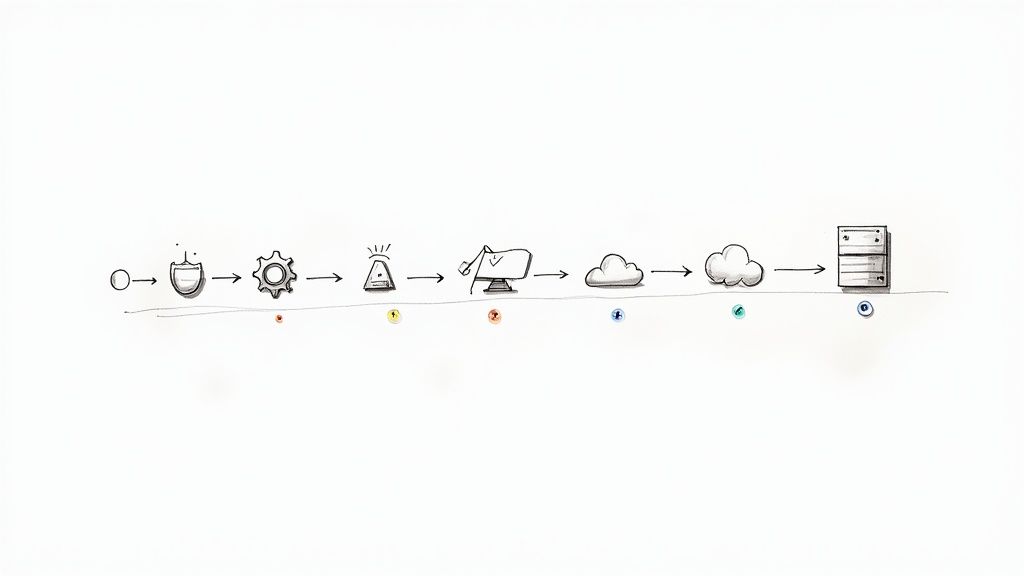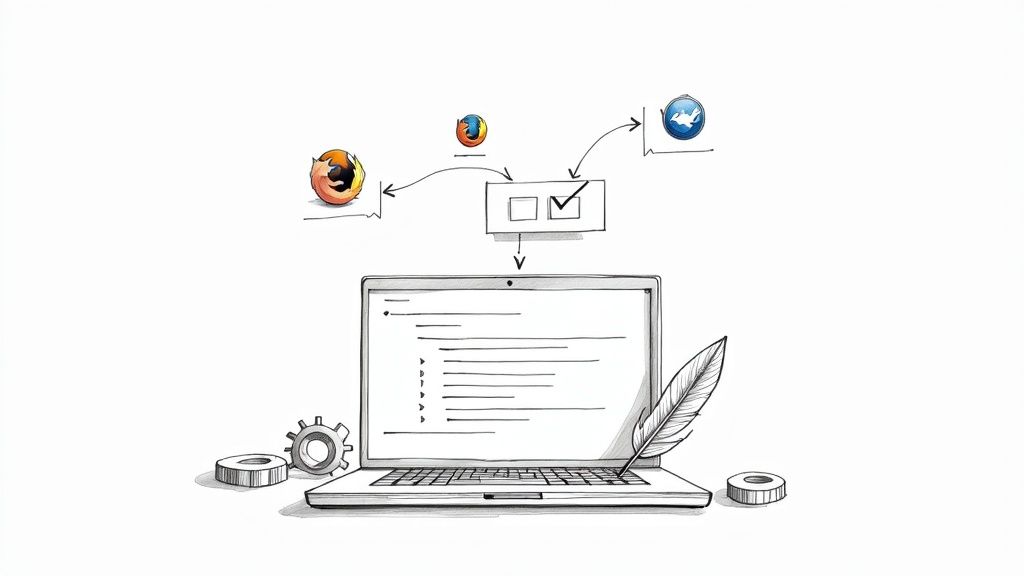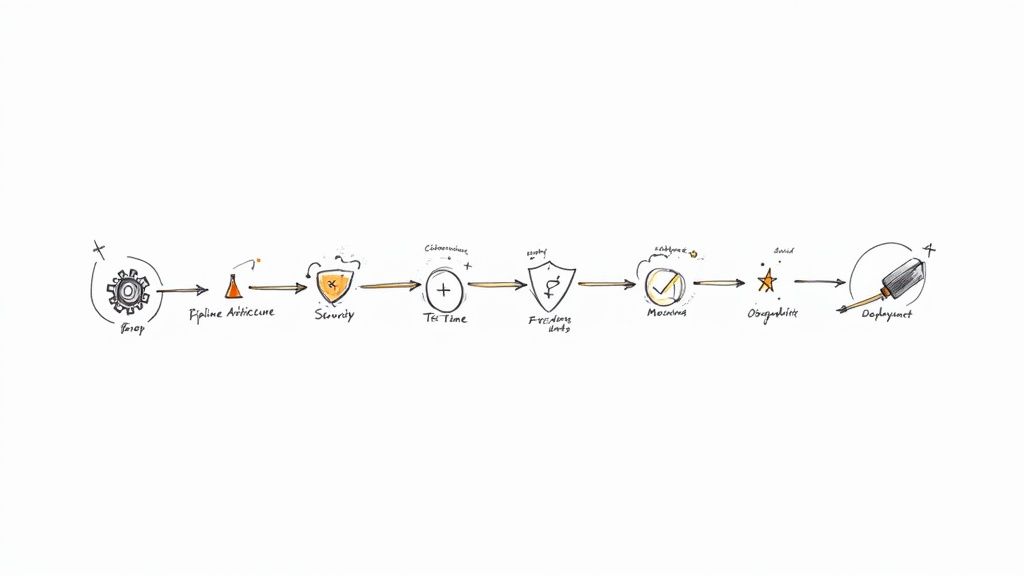Streamlining PR Reviews: The Role of Automation and Communication
Pull request review is a bottleneck for many software teams. In this article, Sydney, Axolo's CTO, explains how a good mix of automation and communication can optimize this crucial step. To the delight of developers.

1. The ABCs of Effective Pull Request Management
Pull requests (PR) are more than a code review mechanism; it’s a workflow that impacts the entire development cycle. However, this workflow often becomes a bottleneck, plagued by manual processes and communication gaps. If you’ve ever found yourself waiting for your PR to get reviewed, you know what we’re talking about!
One metric that’s increasingly gaining attention is PR cycle time, defined as the time from PR creation to its merge. A shorter cycle time is not just an efficiency indicator; it’s a competitive advantage. Mergify provides an in-depth analysis on optimizing this crucial metric, emphasizing its role in rapid feature deployment.
Beyond cycle time, there are Four Key Accelerate DevOps Metrics that serve as performance indicators for engineering teams: Deployment Frequency, Change Lead Time, Mean Time to Recovery, and Change Failure Rate. These metrics, discussed extensively in Axolo’s blog, offer a comprehensive view of your development pipeline and are critical for achieving DevOps excellence.
So, how do we optimize these metrics and, by extension, our PR process? The answer lies in what we call the ABC of code reviews
- A for Automation: Focus on how automation can streamline the PR review process, from automated testing to auto-assignment of reviewers.
- B for Best Practices: Adhere to coding standards and review guidelines to ensure maintainability and long-term success.
- C for Communication: Foster clear and effective dialogue between developers and reviewers to expedite the PR process and improve code quality.
Automation can eliminate manual bottlenecks, while effective communication with best practices can expedite approvals and reduce back-and-forths.
2. The Traditional PR Review Process
In a conventional development environment, the PR review process often follows a predictable pattern. A developer submits a pull request, triggering a series of manual checks and reviews. While this approach has its merits, it’s also fraught with inefficiencies that can slow down the entire development pipeline.
Manual Steps Involved:
- Code Submission: A developer pushes code and creates a PR.
- Notification: Team members are notified, often through email or messaging platforms.
- Initial Review: A designated reviewer examines the code for syntax, logic, and style.
- Feedback Loop: Comments and suggestions are made, requiring the developer to make revisions.
- Secondary Review: The updated code undergoes another round of reviews.
- Approval: Once approved, the code is merged into the main branch.
- Deployment: The code is deployed to a staging or production environment.
Common Bottlenecks and Inefficiencies:
❌ Delayed Reviews:
Waiting for reviewers to become available can extend the PR cycle time.
❌ Ambiguous Feedback:
Poorly articulated comments can lead to misunderstandings, requiring additional clarification.
❌ Context Switching:
Constantly shifting between coding and reviewing can disrupt a developer’s flow.
❌ Manual Merges:
Without automation, merging can become a tedious, error-prone task.
Each of these bottlenecks not only extends the PR cycle time but also impacts the Four Key Accelerate DevOps Metrics, particularly Change Lead Time and Mean Time to Recovery.
In the following sections, we’ll explore how automation and effective communication can address these issues, streamlining the PR review process and optimizing key performance metrics.
3. The Importance of Communication
In the software development lifecycle, communication is often undervalued, yet it plays a pivotal role in the PR review process. It’s not just about conveying what you’ve done; it’s about creating a shared understanding among team members, which in turn, influences the quality and efficiency of the development process.
Why Communication Matters
Effective communication is integral for several reasons:
✅ Quality Assurance:
Clear communication ensures that the code meets the intended design and functionality, as highlighted in Google’s engineering practices. https://google.github.io/eng-practices/review/
✅ Reduced Complexity:
When developers and reviewers are on the same page, it minimizes misunderstandings, making the code easier to maintain and evolve.
✅ Faster Reviews:
A well-communicated PR is quicker to review and approve, positively impacting PR cycle time and the Four Key Accelerate DevOps Metrics.
The Role of Clear Communication in PR Reviews
Building on these points, let’s delve into some key practices:
👌 Code Comments:
These provide context and make it easier for reviewers to understand your code, aligning with Google’s emphasis on reducing complexity.
👌 PR Descriptions:
A detailed PR description sets the stage for the review, outlining what changes have been made and what feedback is sought.
👌 Review Guidelines:
Standardizing the review process through guidelines can make the entire workflow more efficient, as it sets clear expectations for both developers and reviewers.
By focusing on effective communication, you not only streamline the PR review process but also contribute to a culture of quality and efficiency within your development team.
4. The Power of Automation
Automation is not just a tool; it’s a force multiplier in the software development process. When applied to PR reviews, automation can significantly reduce manual overhead, allowing developers and reviewers to focus on what truly matters: the quality and functionality of the code.
How Automation Can Speed Up the PR Review Process
Automating certain aspects of the PR review process can have immediate and impactful benefits:
⚙️ Automated Testing:
Implementing CI/CD pipelines that automatically run unit tests, integration tests, and other checks can provide immediate feedback, reducing the time spent on manual testing.
🧑💻Auto-Assignment of Reviewers:
Algorithms can be used to automatically assign the most appropriate reviewers based on code ownership or expertise, eliminating the need for manual selection.
✅ Automated Merges:
Once a PR meets all defined criteria, it can be automatically merged into the main branch, reducing the need for manual intervention.
Types of Tasks That Can (should) Be Automated
Automation can significantly accelerate various aspects of the PR review process. Here are some tasks that are prime candidates for automation:
📏 Code Formatting:
Tools like Prettier can automatically format code to meet style guidelines, ensuring consistency across the codebase.
⚙️ Automated Testing:
CI/CD pipelines can run a suite of tests automatically whenever a new commit is pushed, providing immediate feedback on code quality.
🧑💻 Auto-Assignment of Reviewers:
Algorithms or bots can automatically assign the most appropriate reviewers based on code ownership or expertise.
✅ Automated Merges:
Tools like Mergify can automatically merge approved PRs into the main branch, ensuring that the code meets all defined criteria before merging.
🔗 Dependency Updates:
Bots like Dependabot can automatically update package dependencies, creating PRs for review.
🕵️ Security Scans:
Automated scans can flag security vulnerabilities in dependencies or in the code itself, helping to maintain a secure codebase.
🏷️ Labeling and Categorization:
Automation can add relevant labels to PRs based on the changes made, aiding in quicker identification and review.
📢 Automated Slack Workflow with Updated Notifications:
Utilizing tools like Axolo, automated Slack workflows can provide real-time updates on PR status, comments, and CI/CD actions, streamlining communication and expediting the review process.
By leveraging automation, you not only speed up the PR review process but also improve the reliability and quality of your codebase. This has a cascading positive effect on key performance metrics like PR cycle time and the Four Key Accelerate DevOps Metrics.
5. Integrating Communication and Automation
While communication and automation each offer distinct advantages, their true power is realized when they are integrated into a unified PR review process. This synergy can significantly enhance both the efficiency and quality of your development workflow.
Tools that Facilitate Both
Axolo: By creating temporary Slack channels for every GitHub or GitLab PR, Axolo streamlines communication among developers and reviewers, while also providing notifications for code comments, CI/CD actions, and more. For a broader perspective on enhancing your GitHub-Slack workflow, our "Top 5 GitHub Slack Integration" article also mentions other tools that can add value to your PR process.
Mergify: This tool automates various aspects of the PR process, from assigning reviewers to merging approved PRs, and can be customized to fit your team’s specific needs.
Benefits of a Unified Approach
Integrating communication and automation offers several compelling benefits:
✅ Reduced Cycle Time:
Effective communication speeds up the review process, while automation eliminates manual bottlenecks. The result is a significantly reduced PR cycle time.
✅ Improved Metrics:
A streamlined PR process positively impacts the Four Key Accelerate DevOps Metrics, leading to better overall performance.
✅ Enhanced Team Collaboration:
When communication is facilitated through specialized channels and routine tasks are automated, team members can focus on more complex and meaningful work.
By adopting tools and practices that integrate communication and automation, you’re setting the stage for a more efficient, collaborative, and high-performing development team.
About the author
Sydney is the CTO of Axolo.co and a seasoned JavaScript developer based in France. Passionate about the power of communication, he believes it holds the key to solving the world's greatest challenges. At Axolo.co, he merges tech and communication to streamline the code review process.




